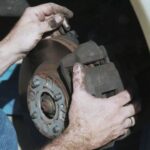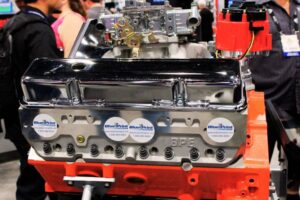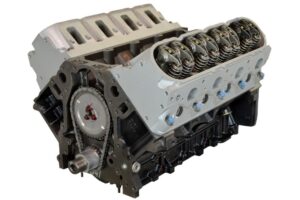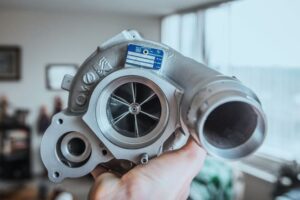It’s not uncommon to experience an overheated engine if you’ve been driving your car for a while. If this happens, it’s essential to know how long it will take for the engine to cool down. In this article, I’ll explain the amount of time it takes for the engine to cool before you can safely drive again.
Under normal conditions, an overheated engine takes at least 30 minutes to cool down to a temperature where it can be safely inspected and potentially worked on. You need to wait until the engine has cooled down before inspecting or attempting to repair it. If you try to troubleshoot a hot engine, you risk being seriously burned by scalding liquids and steam.
Read on to learn more about the time it takes for a car to cool down and the things you can do to help speed up the process.
How Long Does It Take for a Car Engine to Cool Down?

At Least 30 Minutes
When your car engine overheats, it will usually take at least 30 minutes for the vehicle to cool down properly for you to be able to examine or handle its components safely. If steam comes out of the hood, that’s a sign of boiling water that could burn your skin if touched.
Depends on the Difference in Temperature Between the Engine and Its Surroundings
The amount of heat reduction usually depends on the difference in temperature between the engine and its surroundings.
When the temperature of an engine approaches that of its surrounding environment, it will lose very little heat. Getting the engine temperature down to normal operating levels will take several hours.
Completely Cool Down an Engine in Two Hours
You shouldn’t open the radiator cap right after turning off your engine. The coolant has already become hot, and the risk of severe burns comes with it.
On average, it is said that a car engine should be considered cooled down once you can safely handle it. Properly cooling down a car can take up to two hours.
Most cars produce heat using an internal combustion engine (ICE). In an ICE, fuel is burned to create power and produce great heat.
If not adequately managed, heat can threaten the engine’s longevity and possibly your health. So knowing how long it takes for a car or engine to cool down is crucial.
How Long to Let the Engine Cool Before Adding Oil?
How to Cool Down a Car Engine Quickly
If you live somewhere with hot weather, it’s essential to know how to keep your car’s engine from overheating. But what will you do if you’re on the road and your engine starts to overheat?
I bet you don’t want to be stuck on the side of the road with a hot engine, so knowing how to cool down a car engine quickly is a must.
Here are five strategies for cooling down a car engine quickly:
1. Have an Extra Bottle of Antifreeze or Water in Your Car
The best way to prepare for a breakdown is to carry an extra bottle of antifreeze or coolant and a jug of water in your car at all times. A low coolant level is usually responsible for an overheated engine. So if your engine is overheating, adding coolant should help.
Aside from coolant, water can also cool down an engine. On hot summer drives, that water could be a lifesaver. But don’t drink all of it! On your next trip, you can use the empty bottles to collect uncontaminated rainwater!
2. Turn Off Your Car’s AC
If the temperature gauge climbs into a red zone or if you notice that the indicator light is glowing, turn off your air conditioner immediately. Your engine will work harder when your car’s air conditioning system is on.
3. Crank Up the Heater
If the issue persists, turn up your heater. The next few miles of driving could be unpleasant, but the heat transfer from the engine will prevent it from overheating.
4. Pull Over and Stop
If you cannot solve the overheating problem, pull over and stop as soon as it is safe. Next, turn off the engine. If you can open the hood from inside the vehicle, do so. But don’t risk it if steam rises off of hot engine parts. Wait until those parts have cooled first.
As mentioned earlier, it takes at least 30 minutes for an engine to cool down enough so human hands can safely work on it. But if you’d rather not deal with the problem yourself, contact a tow truck company.
5. Check the Coolant Tank
Once the engine has cooled down, check the coolant tank, a translucent plastic reservoir near the radiator. If the coolant level is low, it probably is leaking.
Check under the car for leaks. And if you notice a pool of coolant under your car, there’s probably been a leak in the tank.
What Should You Do When There’s a Leak?
- If you do notice a leak, open the radiator cap carefully.
- Tilt the cap away from you, then cover it with a cloth to protect your hand.
- Refill the radiator with your spare coolant or water when the radiator has cooled.
Also, remember not to add cold water to a hot radiator, or you could crack the engine block due to thermal shock. If you must add water to the engine while it’s warm, pour it slowly into the radiator while the car is idling or parked.
It is important to note that most cars require a 50-50 mix of coolant with water to prevent overheating. In other words, you won’t be able to drive indefinitely with only water. If your car overheats and you don’t have coolant, add as much comparable fluid immediately.
Signs of an Electrical or Mechanical Issue
If the coolant tank is complete, you may be dealing with a problem of either electrical or mechanical origin. In that case, towing the vehicle to a repair shop will solve the problem. The common culprits of this problem may include:
- A bad water pump;
- A leaking hose;
- A malfunctioning thermostat; or
- A worn/broken fan belt.
Why Is My Car Overheating But It Has Coolant in It?
How to Cool Down Car Engine While Driving

If your engine runs hot, pull over immediately and have the vehicle towed to a repair shop. An overheated engine can be dangerous and cause severe damage, such as a seized motor or a costly head gasket repair.
If you’re unsure if the engine is overheating, look for steam from under the hood. If there’s no visible sign of trouble, try these tips to cool down your car:
1. Turn off the AC Right Away
This reduces the load on your engine and can help it run better.
2. Set the Heater and Fan to Their Highest Settings
This may sound like a bad idea, but it helps your engine cool down by allowing more air in.
3. Ensure the Coolant Cooling System Has Enough Antifreeze or Water in It
This is just a temporary solution, so you should keep an eye on your car’s engine. Because the radiator contains hot pressurized water, do not remove its cap until it is cool enough to handle.
Be sure to let the radiator cool down for around 30 minutes before removing its cap, and use a cloth over the cap so you won’t get burned by steam.
4. Rev the Engine
If you’re stuck in traffic or waiting at a stoplight, put the car in park or neutral and rev your engine to 1500 rpm. This will help circulate air and water through the radiator. Avoid using the brakes as much as possible in traffic to keep air flowing through your car’s radiator.
5. Pullover
When all other options are exhausted, it’s time to give in. If your car temperature gauge continues to rise, you should pull over and call a tow truck to avoid damaging the engine.
Again, let the engine cool for at least 30 minutes before you touch any of the components inside. At this point, cool air and time are your best friends.
Again, how long does it take for a car to cool down? A car usually takes 30 minutes to cool down for you to be able to handle it. Have your car towed if you’d want a mechanic to handle your car. If not, allow the engine to cool, then check the coolant tank.
What Factors Determine How Quickly a Car Cools Down?
The quicker your car’s cooling process, the less damage it does to its engine. Engine cooling may be influenced by several factors, which include:
- The amount and quality of insulation in the engine bay;
- How hot the engine becomes during operation;
- How much coolant circulates in the engine;
- The environment’s temperature where your car’s engine overheated; and
- The material used (either aluminum or steel) in which the engine block and head are made.
Also, if your car takes a long time to cool down:
- The environment’s temperature could be too hot;
- There could be insufficient engine oil available;
- There could be a malfunctioning cooling fan;
- The fan belt could be broken or worn out;
- There could be a malfunctioning water pump; and
- The presence of blockage in your vehicle’s radiator.
How Do Car Fans Work in Keeping Cars Cool?
The engine cooling fan is an essential component of the car’s cooling system. When the vehicle runs slowly, the air passing through the radiator is cooled by a fan in the engine.
Running vehicles need good airflow because the coolant becomes hot from absorbing heat. The car’s fans are controlled by temperature and only function when necessary.
Two Types of Engine Cooling Fans
1. Electric Cooling Fan
The primary function of this type of cooling fan is to reduce emissions and improve the engine’s performance. This cooling fan can be installed in both rear-wheel-drive and front-wheel-drive vehicles. A computer-controlled sensor activates a cooling fan that gauges the engine’s temperature.
A car’s coolant sensor detects an increase in temperature above normal levels. When the temperature rises to a certain level, the sensor signals to close the fan relay control with circuit fuse protection.
2. Manual Cooling Fan
This fan type attaches to the engine’s drive pulley. It engages when your car’s engine runs at a high temperature. A thermal fan clutch, which is a component that detects the radiator’s heat emission, controls the manual cooling fan.
Also, thermal fan clutches are designed for freewheeling when they aren’t engaged. They are made of silicone grease that expands through heat exposure.
The lubricant is usually kept in place by a seal and a set of shaft bearings in a typical unit. It is usually either bolted or connected to the engine’s water pump.
Tips on How to Keep Cars from Overheating
There’s nothing quite like the experience of driving down the highway and suddenly realizing that you’re stuck in a traffic jam because your vehicle is too hot to go anywhere.
Whether you’re in a big city or out on the open road, there are things you can do to keep your engine cool and avoid that dreaded day when you realize your car has stopped working because it was too hot.
Here are some tips on how to prevent your vehicle from overheating:
- Cover the windshield with a sunshade while parked if you cannot park under a shade during hot weather.
- When parking your car in an area where it will be safe from damage or theft, leave the windows slightly open.
- Regularly maintain and service your car’s cooling system to ensure it continues functioning efficiently.
- Be sure to have your air conditioning system regularly serviced by a qualified technician.
- Wipe clean your car’s surface using a damp cloth, especially when the weather is too hot.
Frequently Asked Questions – How Long Does a Car Need to Cool Down?
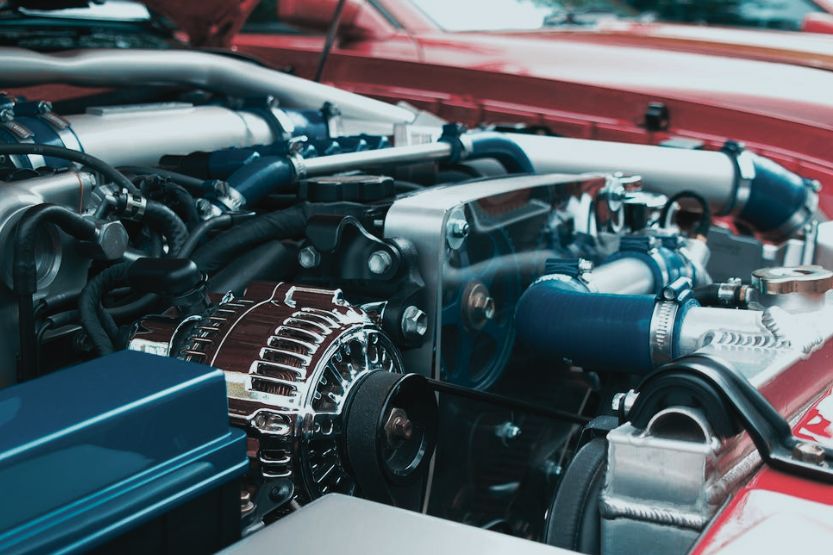
How Long Does It Take a Car to Completely Cool Down?
Usually, it takes around 30 minutes for your car’s engine to cool enough. It’s the usual time when it is safe to handle and check engine components. It will take two to three hours for the engine to become cold after using your car.
Why Does a Car Take a Long Time to Cool Down?
Even if the temperature door is in the correct position on some systems, the hot coolant in the core can still send sufficient heat to the HVAC case, slowing down the cooling process.
Is there an issue with the radiator fan? If it has a clutch fan, it could be engaging late. The fan may turn on a little later than usual if the fan is electric.
How Can I Cool Down My Engine Fast?
First, put your vehicle in neutral or park, then rev the engine. This will make the fan and the water pump work faster, pulling more air and water through your car’s radiator. This increased circulation cools down the engine. Pull over and open the hood.
Does Popping the Hood Cool the Engine?
Popping your car’s hood allows heat to easily and quickly escape from the engine bay. And the faster the engine bay cools down, the longer the small plastic and rubber components in your engine bay will last. Why? Because they don’t get as brittle due to stagnant heat.
Can I Drive My Vehicle After It Overheats?
Many car engines also overheat when they’re low on coolant. This happens when you don’t refill your car or if there is a leak draining coolant out of your engine. Regardless, if you continue to drive after your car overheats, you could damage your engine severely and put yourself at risk.
Should I Let My Vehicle Cool Down After Driving?
There’s no need to continue running a naturally aspirated car after hard driving. Just shut it off and allow it to cool down. It’s suggested that you do this with turbocharged cars to give the turbo a chance to spin down or cool down. This will help with its longevity.
Conclusion – How Long Does It Take for a Hot Car to Cool Down?
Knowing how long an overheated engine takes to cool down is essential. If you don’t have the time to wait for it to cool down, you should have the vehicle towed to a shop.
It takes approximately 30 minutes for a hot car to cool down. So if the vehicle is still running, turn off the engine immediately and let it sit for about 30 minutes.
Ensure all doors are opened so air can circulate inside and out of the vehicle. And again, do not attempt to drive the car until it has cooled down completely.
To recap, here’s how you can cool down a car engine quickly:
- Have an extra bottle of antifreeze or water in your car;
- Turn off your car’s AC;
- Crank up the heater;
- Pull over and stop; and
- Check the coolant tank.
And here’s how you can cool down a car while driving:
- Turn off the AC right away;
- Turn up the heater and fan to their highest settings;
- Ensure the coolant cooling system has enough antifreeze or water in it;
- Rev the engine; or
- Pullover.





